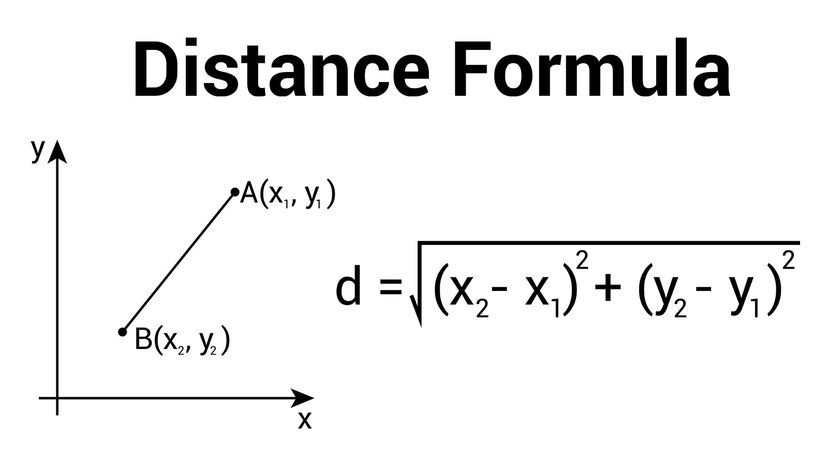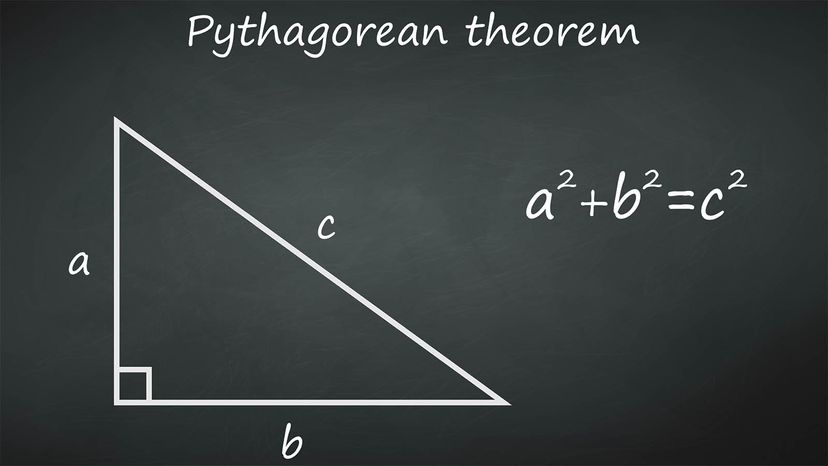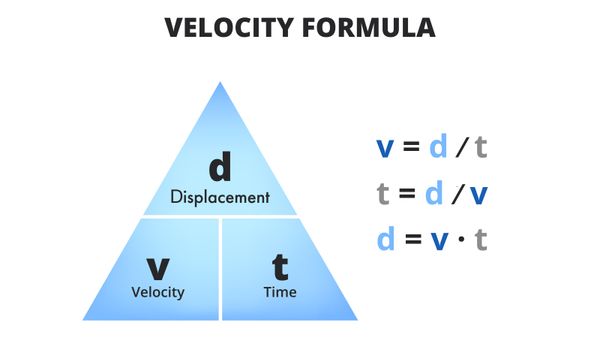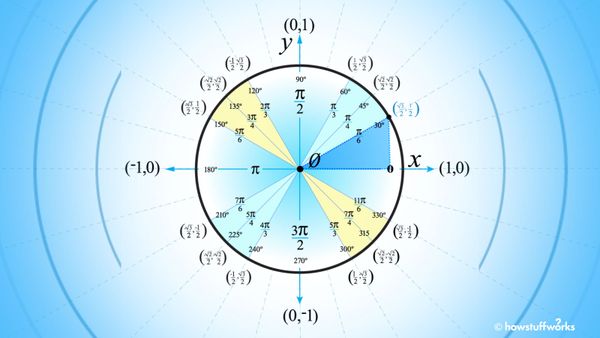The first point and second points on your graph will each have an x coordinate and a y coordinate. You can calculate the shortest distance between these two points by using the Euclidean distance formula, which is a Pythagorean theorem-related algebraic expression.
D = √(x₂ - x₁) ² + (y₂ - y₁)²
Here, D stands for "distance." As for x₂ and x₁, they refer to the x coordinates of Point 2 and Point 1, respectively. Same goes for y₂ and y₁, except those are the two y coordinates.
So, to calculate the distance, our first step is to subtract x₁ from x₂. Then we have to multiply the resulting number by itself (or, in other words, "square" that number).
After that, we must subtract y₁ from y₂ and then square the answer we get from doing so. This will leave us with two numbers we must add together.
Then, finally, take that number and find its square root. And that square root, ladies and gentlemen, is our distance.
Distance Formula Example
OK, so let's say Point A has an x coordinate of 2 and a y coordinate of 5 (2,5). Let us also assume that Point B's got an x coordinate of 9 and a y coordinate of 13 (9,13). Plug those values into the handy-dandy formula and you get this:
What's 9 minus 2? Easy, 7. And 13 minus 5 is 8, of course.
Now we're left with this:
If you "square" 7 — as in, multiply the number by itself — you end up with 49. As for 8 squared that works out to 64. Let's plug those values into the equation, eh?
Now we're cooking. Add 49 and 64, and you get 113.
What's the square root of 113? The answer is 10.63, so therefore:
Go forth and ace your next pop quiz!
This article was updated in conjunction with AI technology, then fact-checked and edited by a HowStuffWorks editor.




